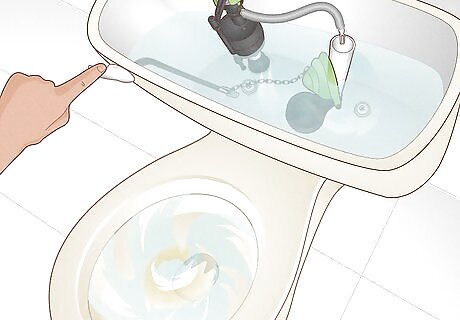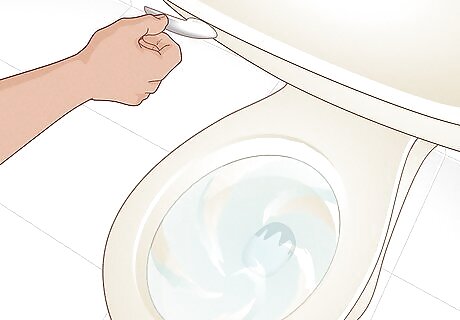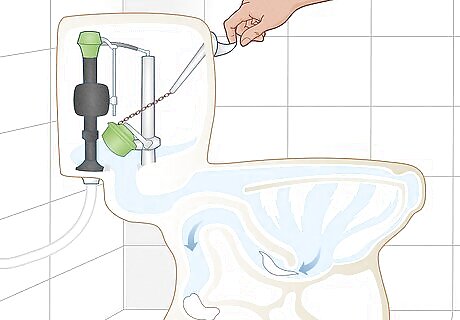
views
- Check the toilet tank to see if there’s water inside. If there is, flush the toilet with the handle as normal.
- Fill a bucket with 1 to 2 gallons (3.8 to 7.6 L) of water from a pool, a public water fountain, or a neighbor. Pour the water into the bowl slowly, then quickly dump the rest to flush it.
- Fill your toilet tank with water to the fill line or about 1 inch (2.5 cm) below the edge. Replace the tank lid and flush the toilet with the handle as normal.
Using the Water in the Tank

Check the toilet tank to see if you have an emergency flush left. The tank on the back of the toilet fills up every time the bowl is flushed and stays that way until it flushes again. If your water is turned off, you may still have one more flush to use. If there’s water inside the tank, flush the toilet with the handle as normal.
Flushing a Toilet with a Bucket of Water

Fill a bucket with 1 to 2 gallons (3.8 to 7.6 L) of water. If you have spare potable water, you can use that for this method. If you’re expecting your water to be shut off soon, you can also fill your bathtub with water so you can easily fill a bucket from there. You can also get water from: Inside the mixed-use building at your apartment complex A jacuzzi, pool, or hot tub A rain barrel Park water fountains A nearby stream Disposable water bottles A friendly neighbor A gas station or truck stop

Pour the water directly into the bowl and the toilet will flush automatically. Pour slowly in the beginning, then quickly dump the rest into the bowl. The pressure from the pouring water forces the water in the bowl through the pipes, creating a suction effect that flushes everything in the bowl. When you use this method, you don’t empty the toilet’s tank, so there’s no need to refill it and you can repeat this process if needed until your water turns back on.
Flushing a Toilet by Filling the Tank with Water

Fill the toilet tank with water to the fill line or 1 inch (2.5 cm) below the edge. The line is usually located on one of the walls of the tank. You can also find how many gallons of water your tank holds by looking at the “gpf” label right behind the seat hinge on the bowl. Fill a bucket with at least 2 gallons (7.6 L) of water and pour it into the toilet tank to the water fill line or about 1 inch (2.5 cm) below the edge of the tank. Most newer toilet tanks can hold around 1.28 gallons (4.8 L) of water, but older toilets might require you to add more. This method tends to use more water, so the first method might work better if you’d like to be able to flush multiple times and only have a limited amount of water to spare.

Replace the toilet tank lid and flush the toilet with the handle. The flush handle will lift the flapper inside of the tank, forcing water to rush out of the tank into the bowl. Gravity and the pressure of the water force everything in the bowl through the pipes. If your toilet doesn’t flush, check that the toilet flapper is closing correctly. Home improvement specialist Patrick Johns says that if the flapper is “on a chain, adjust the chain” to “make sure there's nothing obstructing it.” Then, “check where [the flapper] opens up” and “wipe that down to make sure there's no sediment in [it] that got stuck.”
How does a toilet flush?

Toilets flush when water from the tank forces the waste down the pipes. If you look at the side of a toilet, you’ll notice an upside-down U pipe under the tank. When you press the handle, the flapper inside the tank opens, allowing water to rush into the bowl. The water pushes over the hump of the U pipe, creating a vacuum that pulls water and waste into the pipes. This is why using a bucket of water automatically flushes your toilet—it does the exact same thing that the tank of the toilet does when you press the handle. The water in the bowl is constantly there to keep sewer gas from escaping the pipes and entering into your home. Inhaling high levels of this gas can lead to health problems.




















Comments
0 comment